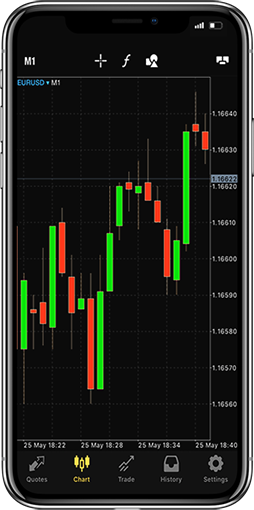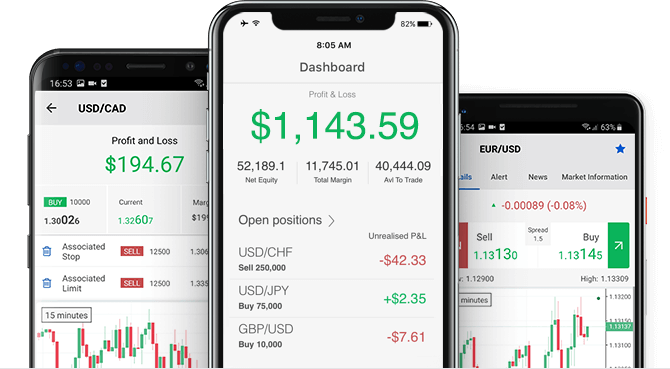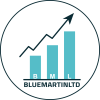BlueMartin offers tight spreads to all clients, irrespective of their account types and trade sizes. We recognize the fact that tight spreads only make sense for our clients if they can trade with them. This is the reason why we attribute great importance to our execution quality.
Tight spreads as low as 0.5 pips on all major currency pairs
75+ Financial Instruments
Trade with NO hidden fees
The lowest possible spreads for all trading account types
Best Execution Policy
Fractional pip pricing
| Instrument | Description | Minimum spread (in points) |
Average Spread (in points) |
Swap Buy Position (in points) |
Swap Sell Position (in points) |
|---|---|---|---|---|---|
| EURUSD | Euro vs US Dollar | 3 | 4 | -5.86 | -0.052 |
| GBPUSD | Great Britan Pound vs US Dollar | 8 | 8 | -5.551 | -5.187 |
| USDCHF | US Dollar vs Swiss Franc | 6 | 9 | 0.266 | -5.694 |
| USDCHF | US Dollar vs Swiss Franc | 6 | 9 | 0.266 | -5.694 |
| USDCHF | US Dollar vs Swiss Franc | 6 | 9 | 0.266 | -5.694 |
| USDCHF | US Dollar vs Swiss Franc | 6 | 9 | 0.266 | -5.694 |
| Instrument | Description | Minimum spread (in points) |
Average Spread (in points) |
Swap Buy Position (in points) |
Swap Sell Position (in points) |
|---|---|---|---|---|---|
| XAUUSD | Gold Vs US Dollar | 14 | 19 | -6.13 | -3.27 |
| XAUAUD | Gold Vs Australian Dollar | 45 | 50 | -7.44 | -5.912 |
| XAUEUR | Gold Vs US Euro | 30 | 35 | -1.95 | -5.89 |
| Instrument | Description | Minimum spread (in points) |
Average Spread (in points) |
Swap Buy Position (in points) |
Swap Sell Position (in points) |
|---|---|---|---|---|---|
| XAUUSD | Gold Vs US Dollar | 14 | 19 | -6.13 | -3.27 |
| XAUAUD | Gold Vs Australian Dollar | 45 | 50 | -7.44 | -5.912 |
| XAUEUR | Gold Vs US Euro | 30 | 35 | -1.95 | -5.89 |
| Instrument | Description | Minimum spread (in points) |
Average Spread (in points) |
Swap Buy Position (in points) |
Swap Sell Position (in points) |
|---|---|---|---|---|---|
| XAUUSD | Gold Vs US Dollar | 14 | 19 | -6.13 | -3.27 |
| XAUAUD | Gold Vs Australian Dollar | 45 | 50 | -7.44 | -5.912 |
| XAUEUR | Gold Vs US Euro | 30 | 35 | -1.95 | -5.89 |
What are forex spreads?
When you begin trading, you’ll notice that you’re given a ‘bid’ (or ‘sell’) price and an ‘ask’ (or ‘buy’) price. The ‘bid’ is the price at which you sell the base currency, and the ‘ask’ is the price at which you buy the base currency. The difference between these two prices is what we call the spread.
When a trade is opened, there are always third parties who facilitate the opening and closing of that trade, like a bank or a liquidity provider. These third parties must make sure that there is an orderly flow of buy and sell orders, which means that they have to find a buyer for every seller and vice versa.
The third party is accepting the risk of a loss while facilitating the trade, thus the reason the third party will retain a part of each trade – that retained part is called the spread!
When a trade is opened, there are always third parties who facilitate the opening and closing of that trade, like a bank or a liquidity provider. These third parties must make sure that there is an orderly flow of buy and sell orders, which means that they have to find a buyer for every seller and vice versa.
The third party is accepting the risk of a loss while facilitating the trade, thus the reason the third party will retain a part of each trade – that retained part is called the spread!

How to calculate your transaction cost?
To work out the cost of a trade itself (not including swaps, commissions etc.), you take the spread and pip value and multiply it by the number of lots that you’re trading:
Trade Cost = Spread X Trade Size X Pip Value
For example:
A trade you have opened has 1.2 pips spread. In this example, you’re trading with mini lots which are 10,000 base units. The pip value is at $1, so the transaction cost is $1.20
As you’ve probably gathered, the bigger the trade, the larger your transaction costs will be!
A trade you have opened has 1.2 pips spread. In this example, you’re trading with mini lots which are 10,000 base units. The pip value is at $1, so the transaction cost is $1.20
As you’ve probably gathered, the bigger the trade, the larger your transaction costs will be!



